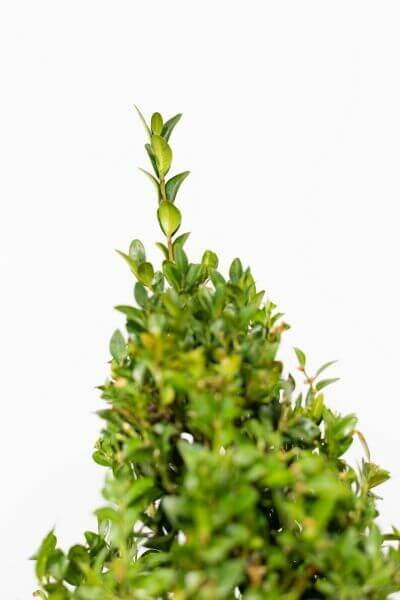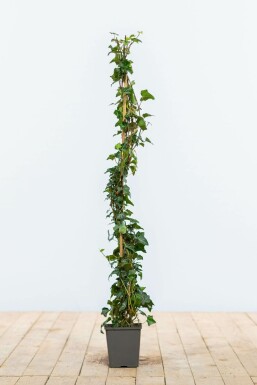Low-maintenance Hedging Plants
Low-maintenance Hedging Plants
Blog Article
Hedging Plants For Wind Protection
Enhance your garden's appeal with rich hedge varieties such as Yew (Taxus), Thuja, Laurel, Photinia, and Bamboo, commemorated for their structural stability and environmental advantages.
Yew and Thuja supply evergreen protection and winter resilience, while Laurel provides rapid growth and broad, aromatic leaves.
Photinia adds seasonal charm with its dynamic red foliage, and Bamboo provides a low-maintenance, serene atmosphere.
These hedges improve air quality, reduce noise, and create tranquil, private spaces.
Correct planting, spacing, and maintenance guarantee energetic development and environmental consistency.
Explore how these rich ranges can raise your garden's beauty and wellness.
Key Takeaways
Change Your Garden With Lush Hedge Ranges
- Select Yew for its thick, evergreen development and exceptional durability.
- Opt for Laurel for its fast growth and broad leaves, making sure fast personal privacy.
- Choose Photinia for its vibrant seasonal foliage, which turns a striking dark red.
- Utilize Bamboo for a low-maintenance, winter-hardy hedge with aesthetic appeal.
- Space plants 2-3 per meter and prune routinely for optimum development and health.
Popular Hedge Plants
When changing a garden with lavish hedge ranges, it's essential to consider popular hedge plants such as Yew, Thuja, Laurel, and Photinia due to their unique characteristics and benefits.
Yew (Taxus) is highly esteemed for its longevity and dense, green growth, making it a prime choice for enduring landscapes.
Thuja is kept in mind for its evergreen foliage and robust winter season strength.
Photinia includes seasonal vibrancy with red leaves that darken with time, developing dynamic visual appeal.
Laurel provides fast development and aromatic, broad leaves, perfect for fast personal privacy.
Furthermore, Bamboo is an outstanding option for ambiance, offering a low-maintenance, winter-hardy option that boosts the garden's visual with its sophisticated, swaying walking sticks.
These selections cater to a range of horticultural needs and preferences.
Benefits of Garden Hedges
Garden hedges use a multitude of advantages, making them an important addition to any landscape. These natural barriers are economical to execute and provide considerable wind protection, enhancing air blood circulation and contributing to noise decrease. The dense foliage of hedges like Thuja and Beech makes sure personal privacy by obstructing presence, producing a remote and serene environment.
Hedges likewise play an important role in microclimate guideline, offering a stable environment that cultivates plant growth and reduces temperature fluctuations. Their detailed leaf structures filter contaminants, improving air quality and adding to a healthier garden community.
Additionally, hedges excel in sound reduction, soaking up and deflecting sound waves to lower ambient noise levels. This dual performance of offering both acoustic and visual privacy boosts the overall serenity and visual appeal of any garden.
Planting and Maintenance Tips
For an effective hedge, careful preparation of the planting area is important. Ensure the soil has appropriate pH and drain to support strong root advancement.
Space the plants appropriately for the picked types. Water the hedge frequently throughout its preliminary growth phase, adjusting as required with seasonal modifications.
Implement a methodical bug control and illness prevention strategy, using chemical or natural treatments when needed. Frequently inspect for aphids, mites, and fungal infections.
Apply mulch to keep moisture and reduce weeds. Seasonal pruning promotes thick development and air blood circulation, essential for plant health.
Following these guidelines will help you cultivate a dynamic, properly maintained hedge that enhances the beauty of your garden.
Spacing and Trimming Guidelines
Spacing and Trimming Guidelines
Appropriate spacing and trimming are important for cultivating healthy, aesthetically appealing hedges. Sufficient spacing ensures each plant receives adequate nutrients, light, and airflow.
Follow these guidelines for optimal hedge maintenance:
- Spacing: Position hedge plants 2-3 plants per meter to encourage robust growth.
- Pruning Techniques: Routine pruning is necessary for keeping desired hedge height and shape. Cut new development in summer and cut back older wood during winter.
- Seasonal Care: Change trimming approaches and schedules according to seasonal requirements to make sure plant health.
- Hedge Height: Frequently screen and cut to maintain the preferred hedge height and achieve consistent aesthetic appeals.
Adhering to these steps will ensure your hedge thrives, improving both the appeal and functionality of your garden.
Selecting the Right Hedge
Picking the Right Hedge
Choosing the proper hedge involves assessing aspects such as mature height, foliage density, and ecological resilience. Successful hedge plant choice needs understanding each species' development characteristics and site-specific adaptability.
For instance, Yew (Taxus) uses excellent durability and thick development, while Thuja is notable for its winter durability. In addition, thinking about maintenance requirements is essential; fast-growing species like Laurel or Privet need routine cutting, whereas low-maintenance alternatives like Bamboo or Ivy might be more suitable for those seeking very little upkeep.
Environmental factors such as soil type, light accessibility, and moisture conditions must likewise direct the choice procedure. This careful approach ensures the picked hedges will prosper, providing both aesthetic and practical advantages to the garden landscape.
Delivery and Planting Suggestions
To ensure your hedge plants prosper, they must be delivered by specialized couriers and planted quickly upon arrival.
Follow these important steps for successful planting:
- Soil Preparation: Enrich the soil with raw material to enhance drainage and nutrient content.
- Planting Depth: Create a trench two times the width and equal to the depth of the root ball.
- Watering Techniques: Water completely after planting, keeping the soil regularly damp but not filled.
- Mulching: Use a layer of mulch to keep moisture and reduce weeds.
Consumer Assistance and Service
Given the crucial function of timely help in horticultural pursuits, our client support group is offered six days a week through telephone, e-mail, and social networks to provide expert suggestions and quickly address any issues. Their dedication to quick response times guarantees customer fulfillment by dealing with questions associated with plant health, optimal planting approaches, and upkeep schedules.

Action Time
----------------------
Within 24 hours
This detailed support group, reinforced by an excellent 9.3/ 10 client rating, highlights our dedication to improving the gardening experience for every customer.
Frequently Asked Concerns
How Long Does It Consider Hedge Plants to Establish?
Hedge plants usually require one to 3 years to become totally established, with the specific duration differing by species and growing conditions.
Reliable care during this vital period is vital for robust development. Consistent watering, alert weed control, and proper fertilizer application are essential in promoting strong root advancement.
For instance, fast-growing species like Laurel may establish quicker, while slower-growing ranges such as Yew may take longer. Persistent maintenance accelerates the establishment procedure, leading to healthy and dense hedges.
What Are the very best Hedge Plants for Privacy?
The concern of the finest hedge plants for personal privacy includes assessing evergreen and deciduous options.
Evergreen hedges like Thuja, Laurel, and Cypress supply year-round protection, guaranteeing continuous personal privacy.
On the other hand, deciduous hedges such as Beech provide seasonal privacy, shedding leaves in cooler months.
Key maintenance pointers for privacy hedges include routine cutting, fertilizing in spring, and proper spacing-- normally 2 to 3 plants per meter.
Furthermore, consistent watering and thorough weed elimination are crucial for promoting healthy, thick growth.
Can Hedge Plants Attract Wildlife to My Garden?
Yes, hedge plants can draw in wildlife to your garden by providing necessary benefits like shelter, food, and nesting websites, thus enhancing regional biodiversity. Yew, holly, and laurel are outstanding for drawing in birds, while ivy supports a range of bugs.
Nevertheless, it's essential to keep in mind that there are some disadvantages, such as increased upkeep to manage insects and routine upkeep. Thoroughly selecting and preserving hedge ranges can help balance these disadvantages and advantages, ultimately cultivating a sustainable and lively ecosystem in your garden.
Are There Any Blooming Hedge Plants Available?
Yes, there are flowering hedge plants readily available that can enhance the charm of your garden.
For instance, Elaeagnus, also referred to as Olive Willow, produces fragrant white flowers in the fall, adding a touch of beauty.
Photinia, another popular option, showcases dynamic red leaves that develop into an abundant green, creating a dynamic visual result throughout the seasons.
To make sure these plants thrive, it's important to practice appropriate pruning strategies and seasonal upkeep, such as trimming new growth in the summertime and cutting down in the winter season.
These procedures will help preserve the health and visual appeal of your flowering hedges.
How Do I Prevent Insects in My Hedge Plants?
To prevent insects in hedge plants, utilize natural insect control approaches and keep proper hedge care. Introduce beneficial insects like ladybugs, which prey on harmful pests, to create a balanced ecosystem.
Regularly check your hedges for indications of problem and without delay remove any affected parts to avoid the spread. Make sure the health of your hedges by using well balanced fertilizers and offering adequate water.
Make use of mulching to maintain soil wetness and proper spacing to reduce plant stress and promote robust growth. These practices collectively assist in decreasing bug problems and preserving a healthy hedge.
Conclusion
In essence, choosing the right hedge ranges such as Yew, Thuja, and Laurel can change any garden into a peaceful haven. These plants supply year-round plant, enhance aesthetic appeal, and deal practical benefits like read more sound reduction and wind defense.
Proper planting strategies, precise spacing, consistent watering, and seasonal cutting are crucial for ideal growth.
Dependable shipment services and professional customer assistance guarantee a seamless experience from purchase to planting, making it easier than ever to elevate your outside space.
Garden hedges use a wide variety of advantages, making them a valuable addition to any landscape. These natural barriers are cost-efficient to execute and provide considerable wind protection, improving air circulation and contributing to sound reduction. The dense foliage of hedges like Thuja and Beech makes sure privacy by blocking visibility, producing a serene and remote environment.

Pruning Techniques: Routine pruning is vital for preserving desired hedge height and shape. Cut brand-new growth in summer season and cut back older wood throughout winter.
Report this page